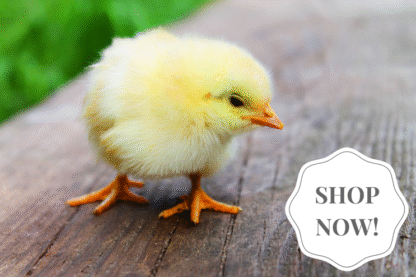
A chicken is most comfortable when the environmental temperature hovers around 70-75°F. As the temperature goes up, so does the chicken’s deep body temperature. Fatalities occur if the chicken’s deep body temperature reaches 115°F or above. When summer temperatures start to rise, here are 8 strategies you can observe to keep your chickens comfortable.
1. Keep them hydrated.
Just like us humans, chickens drink more when the temperature goes up. And just like us, they prefer cool water over warm water. To encourage your chickens to drink, refill their waterer with cool water frequently during a hot day.
Make sure the drinker is shaded throughout the day to keep the water cool longer. Adding large chunks of ice to the drinker also helps.
Chickens that use a nipple drinker may not get enough to drink during summer weather. Providing an additional waterer will give them an alternative to the nipples.
2. Cool their feet.
Cool water is not only good for drinking, but also for standing in. When a chicken feels hot, blood flow increases through its legs. To help dissipate heat from the legs, furnish your chickens with a wading pool filled with cool water for them to stand in.
Note that while the chickens stand in the water, they will not only drink it, but also poop in it. Therefore change the water as often as necessary to keep it clean enough to drink.
3. Check those footpads.
Speaking of feet, the hot, dry sun can bake the chicken yard into hardpan that can be tough on a bird’s footpads. If the flock spends a significant amount of time standing or walking on a hard surface, keep an eye out for bumblefoot. This condition is especially likely to occur in the heavier breeds.
4. Circulate the air.
Good ventilation inside the coop helps keep chickens cool. Where windows and doors are not positioned to provide good ventilation, install a ceiling or wall fan to increase air movement.
5. Provide sun protection.
Provide plenty of shade in the chicken yard where the chickens can rest. If need be, put up an awning or tarp, and fasten it well so it can’t flap and frighten the flock. Take care it doesn’t hang down far enough to block air circulation.
If your chicken coop is portable, move it to a shady area beneath a tree or in the shadow of a taller building. Check to make sure the coop remains in the shade throughout the day.
6. Hose ’em down.
When the environmental temperature approaches the chicken’s body temperature, evaporation can help remove excess body heat. But misting the chickens or their coop is helpful only when the air temperature is at least 95°F and air humidity is below 75%.
When those conditions prevail, hose down the coop’s outside walls and roof, and lightly mist adult chickens. Better yet, set up a misting system and let the chickens choose to mist themselves or not. But never mist chicks, as they can easily chill.
7. Let them bathe.
Furnish your chickens with ample opportunities to dust bathe. A dust bath in cool soil can provide significantly cooling by transferring body heat to the soil. Fresh litter inside the coop also can provide significant cooling.
8. Do Not Disturb.
During hot weather, chickens typically seek out the coolest place they can find for a midday siesta. One of the most important summer strategies to keep your chickens comfortable is to avoid disturbing them during the heat of the day. They’ll much more appreciate your visits, and treats, during cooler morning or evening hours.
Helpful Links
How Chickens Keep Themselves Cool in Summer
Summer Treats for Your Chickens
16 Chicken Breeds that Tolerate Warm Weather
5 Bantam Breeds that Tolerate Warm Weather
And that’s today’s news from the Cackle Coop.
Gail Damerow has written numerous books about keeping poultry, many of them available from the Cackle Bookstore.


i received 6 chicks, within 3 days i lost 2, the other 4 are doing great